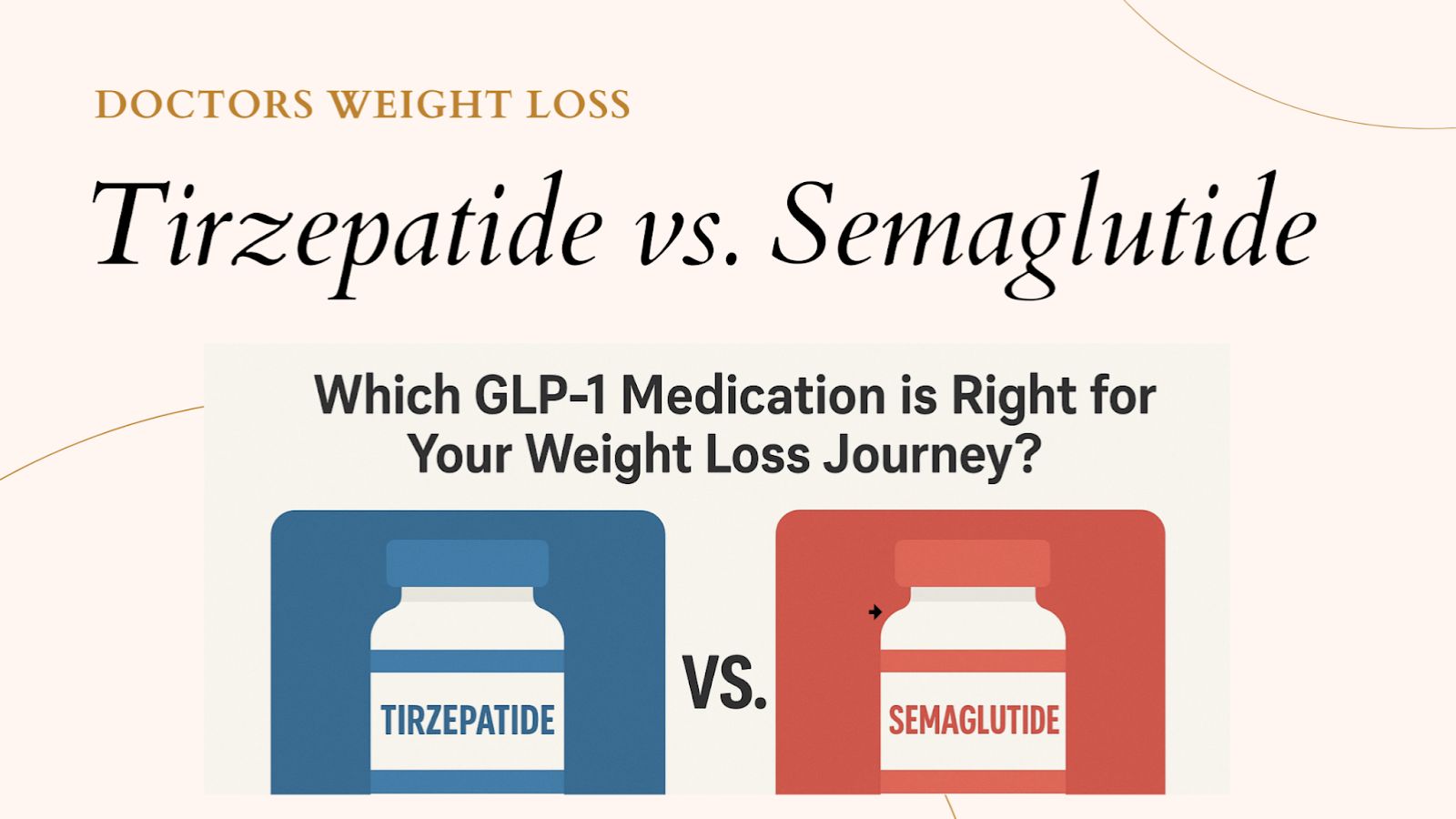
In the evolving landscape of weight management, medications originally designed for type 2 diabetes are gaining prominence for their off-label use in promoting weight loss. Two standout options, tirzepatide and semaglutide, have captured the attention of healthcare providers and patients alike. These GLP-1 receptor agonists not only help regulate blood sugar but also curb appetite, making them powerful tools in the fight against obesity. As more individuals turn to these treatments, understanding their differences, benefits, and potential drawbacks is crucial. This article delves into a comprehensive comparison, drawing on recent research and expert insights, while highlighting how resources like GLP-1 guidance from specialized platforms can enhance your experience.
Understanding GLP-1 Medications: The Basics
GLP-1, or glucagon-like peptide-1, is a hormone released in the gut after eating. It stimulates insulin production, slows digestion, and signals fullness to the brain. Medications that mimic this hormone, known as GLP-1 receptor agonists, have revolutionized diabetes care and are now pivotal in weight loss strategies.
Semaglutide, available under brand names like Ozempic, Rybelsus, and Wegovy, is a pure GLP-1 agonist. It enhances insulin secretion and reduces hunger by acting on brain receptors. Wegovy is specifically FDA-approved for weight management in individuals with obesity or overweight conditions accompanied by related health issues.
Tirzepatide, marketed as Mounjaro for diabetes and Zepbound for weight loss, takes it a step further. It’s a dual agonist, targeting both GLP-1 and GIP (glucose-dependent insulinotropic polypeptide) receptors. GIP also promotes insulin release and satiety, potentially amplifying the effects. This dual action might explain why some studies suggest tirzepatide could lead to more significant weight reduction.
Both drugs are typically administered via weekly injections, though semaglutide offers an oral option in Rybelsus. Starting with lower doses and gradually increasing them helps minimize side effects, but professional oversight is essential.
Comparing Effectiveness for Weight Loss
When it comes to efficacy, emerging research paints an intriguing picture. A 2024 study, along with analyses from 2023 and 2021, indicates that tirzepatide may outperform semaglutide in weight loss outcomes. Participants on tirzepatide often experienced greater reductions, sometimes up to 35% more than those on semaglutide. However, these studies had limitations, such as unequal dosing; tirzepatide was administered at higher comparative levels, which could skew results.
Tirzepatide’s FDA approval extends to weight loss in people without diabetes, backed by trials showing substantial results. Semaglutide, while effective off-label, has robust data from Wegovy trials demonstrating an average 15% body weight loss over 68 weeks. For non-diabetic individuals, both show promise, but tirzepatide’s dual mechanism might offer an edge.
That said, individual responses vary based on factors like genetics, lifestyle, and adherence. A detailed comparison from Healthline highlights these nuances, emphasizing the need for personalized medical advice. Integrating GLP-1 guidance into your regimen can optimize results by aligning diet and supplements with the drug’s appetite-suppressing effects.
In clinical settings, tirzepatide users in one 72-week trial lost an average of 20-25% of their body weight, compared to 15-20% for semaglutide. Long-term data is still emerging, but early indicators suggest tirzepatide’s cost-effectiveness due to sustained efficacy.
Side Effects and Safety Considerations
No medication is without risks, and both tirzepatide and semaglutide share similar side effect profiles. Common issues include gastrointestinal disturbances like nausea, vomiting, diarrhea, or constipation, often peaking during dose escalation and subsiding over time. Headaches, abdominal pain, and fatigue are also reported.
More serious concerns involve pancreatitis, gallbladder problems, and kidney issues. Both carry a boxed warning for thyroid C-cell tumors, based on animal studies—though human relevance is unclear. Hypoglycemia is a risk, particularly if combined with other diabetes meds.
Tirzepatide, being newer, raises questions about long-term effects in non-diabetic users. Monitoring is key, and symptoms like severe abdominal pain warrant immediate medical attention. For those on these therapies, GLP-1 guidance resources offer strategies to mitigate side effects through nutrition, such as incorporating fiber-rich shakes that ease digestive woes.
Switching between the two is generally safe and may even boost weight loss plateaus, per recent research. Always consult your doctor before making changes to avoid interactions or abrupt shifts in blood sugar control.
Dosages, Costs, and Accessibility
Dosing regimens differ due to the drugs’ mechanisms. Wegovy starts at 0.25 mg weekly, ramping up to a maintenance of 2.4 mg. Zepbound begins at 2.5 mg, increasing to up to 15 mg. These titrations minimize side effects while building efficacy. For patients using compounded versions, tools like a tirzepatide reconstitution calculator can help ensure accurate mixing and dosing.
Cost is a significant barrier. Without insurance, a month’s supply of Wegovy can exceed $1,300, while Zepbound hovers around $1,000. A 2023 study estimated 68 weeks of semaglutide at $22,878 versus $17,527 for 72 weeks of tirzepatide, suggesting better value for the latter due to superior weight loss.
Insurance coverage varies; some plans cover diabetes but not weight loss. Compounded versions exist but lack FDA oversight, posing risks. Platforms offering GLP-1 guidance can help by providing affordable, compatible products like protein bars that extend the drugs’ benefits without breaking the bank.
Supporting Your Journey with Nutrition and Lifestyle
While these medications are transformative, they’re most effective alongside lifestyle changes. GLP-1 drugs suppress appetite, but nutrient-dense diets prevent deficiencies. This is where specialized support shines. At DoctorsWeightLoss.com, individuals find products like shakes and bars designed for GLP-1 users—low in carbs, high in protein, and aligned with metabolic shifts to sustain energy and muscle mass.
Diet guidance emphasizes the importance of balanced meals, adequate hydration, and regular exercise. For instance, incorporating anti-inflammatory foods can combat side effects, while tracking via apps integrated with EHR systems enhances accountability. Regular check-ins with providers ensure safety and adjustments.
Success stories abound: Patients combining tirzepatide with tailored nutrition report not just weight loss but improved energy and mood. Semaglutide users benefit similarly, often sustaining losses long-term with ongoing support.
Conclusion: Making an Informed Choice
Tirzepatide and semaglutide represent exciting advancements in weight management, with tirzepatide potentially edging out in effectiveness due to its dual action. However, factors like side effects, cost, and personal health history should guide your decision. Research is ongoing, and neither is a magic pill; sustainable results demand commitment.
Consult your healthcare provider for personalized advice, and consider resources like DoctorsWeightLoss.com for guidance on GLP-1 that complements these treatments. By pairing medications with optimized nutrition and products, you can maximize benefits and embark on a healthier path. Remember, weight loss is a journey; empower it with knowledge and support.

